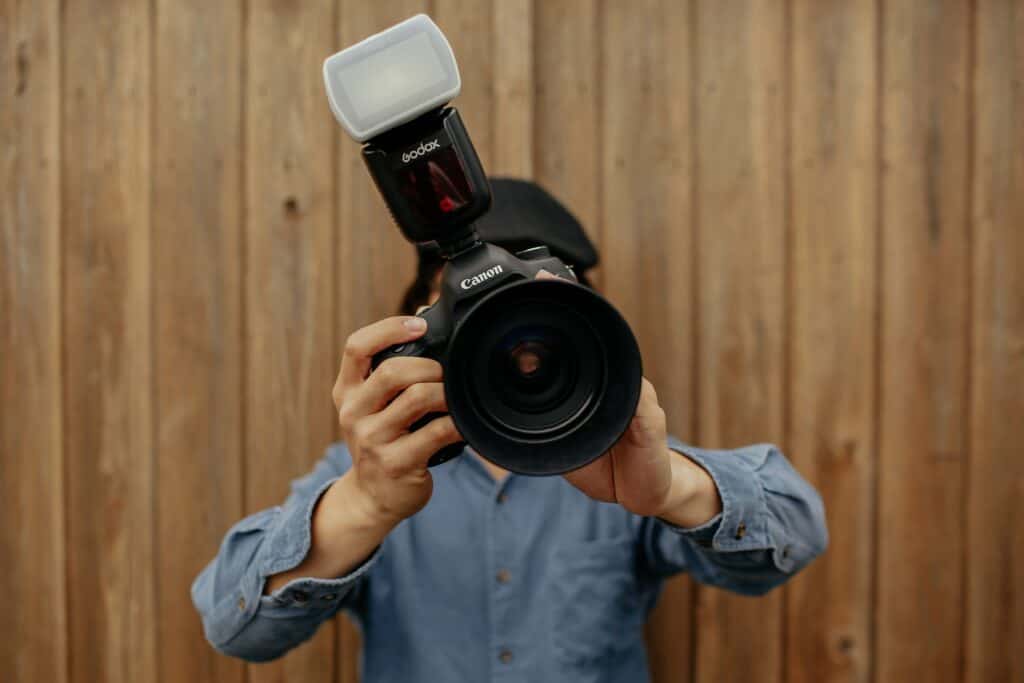What separates the professional photographer from the amatuer photographer is a good grasp on lighting. The divide further widens when it concerns artificial light, which is one of the most difficult to work with! Many photographers think that you can use artificial light bare, but unfortunately, that’s a very harsh light that isn’t flattering. As such, most photographers opt to place a flash diffuser on!
Flash diffusers are a light box tool that softens the light that hits it or goes through it. All diffusers create a larger light source, spreading the light out over a larger area. This softens the light, otherwise known as, makes sure the light doesn’t have a hard edge to it (like a spot light might have). A diffuser is a type of light modifier, which is an accessory or tool that changes how the light passes through it.
What is a Flash and Why Should You Soften It?
A flash is a device used in photography that bursts a powerful bright light. This is a form of artificial light. The flashes we are referring to are external flashes, not the one built into some cameras. External flashes attach to the hot shoe (the little bracket at the very top of your camera) and synchronize with your shutter. They output light when you press down to take a photograph.
Flashes need their light softened because the ‘naked’ light is extremely harsh- causing unflattering aspects of someone’s face to appear bold and bright. Using a flash without a diffuser is equivalent to shooting a portrait in high noon soon, there is a lot of contrast and not in a good way! The shadows are extremely dark, highlights extremely bright, and the light creeps into every unflattering dip in someone’s face.
A diffuser camera flash creates softer light, with more gradual transitions between highlights and darks. As such, it smooths out all of the contrast. Diffusers tend to be semi-translucent material that’s larger than the light source itself. Subsequently, it spreads the light and softens its intensity.
Different Types of Flash Diffusers
Not all diffusers are created equal. There are several different shapes!
Most new flashes have an accessory you can purchase known as a Dome Diffuser. These lighting accessories have a translucent dome that spreads the light and helps reduce the intensity. They’re usually magnetic and snap on to the metal flash.
The most common diffuser is a rectangular softbox. For flashes, these are mini softboxes to fit the unit. This is a three to a four-inch version of a studio softbox. This attachment has a square sheet of diffusion material that sits over the light.
If you need more of the light to spread, a sphere diffuser may be more your style. Sphere flash diffusers create a larger surface area for the light while offering a bit sturdier mount. As well as this, these diffusers create a more natural catch light in someone’s eye, bringing attention to the eyes.
If placing something over your flash isn’t something you want to do, there is another option: a bounce diffuser. As the name implies, these diffusers soften the light by bouncing it. Instead of shooting the strobe forward towards the subject, they “bounce” the light away from the scene. However, the downside is that this type of diffusion tends to lose more light than a sphere or softbox because of how they work.
How To Use a Flash Diffuser
Using a flash diffuser is fairly simple. Much like you would shoot with a bare flash, you just slap the diffuser on and get right to work!
That being said, the immediate desire is to point the flash directly at your subject. This is not the right way to go! Use the flash to bounce light off of walls. Aim the flash to the ceiling, to the wall behind you, or to any of the walls off to the side. Even with a diffuser, the light may still be too harsh for your subject otherwise.
Experiment with different angles and directions to get the look you’re going for. Try to visualize how the light will move when aimed at the wall or ceiling, so you can control the light that will hit your subject and background.
In conclusion, there will seldom be a time where you will use a flash bare. Invest in good diffusers, and watch your work upgrade in leagues!

